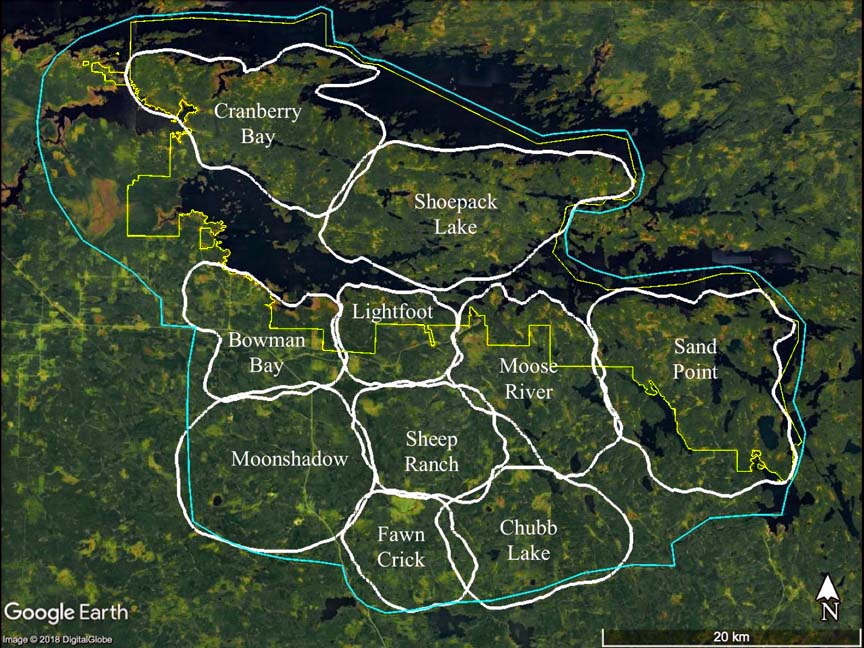Quote:
|
The recovery of the gray wolf after its eradication from Yellowstone National Park, nearly a century ago, serves as a demonstration of how critical keystone species are to the long-term sustainability of the ecosystems they inhabit. In the 70-year absence of wolves in the Park, elk had become accustomed to grazing tender, native willows along stream banks without much predation risk. The consequences of an elk population without a top predator included a decline of the deciduous trees elk eat, a decline of beavers due to the decline of willow and aspen, and a decline in songbirds. These consequences indicate that changes in the wolf population have trickle-down effects on other populations, a phenomenon known as a “trophic cascade.”
|
So in an effort to gather more nuanced data on the movement and habits of the Gray Wolf, the Voyageurs Wolf Project in
Voyageurs National Park is tracking radio collars in seven packs every 20 minutes, and physically inspecting any spot where they
stay more than 20 minutes to see if it was a kill.

Quote:
|
The yellow line is the boundary of Voyageurs National Park. The northern edge of the park is the US/Canada boundary. The aqua blue line is just the outline of our study area.
|

Quote:
I’m wondering what is in the middle of the white tracker for them to stay clear??
It is hard to say why some wolves go where they go and why they don't go other places. There is no lake in those empty spaces but in the big empty space is the beginning of one fork of the Rat Root River. That area is very swampy/boggy and probably not a very easy place to move around in. So it is possible the wolf just avoided it because its not easy to travel through, or its possible there are not any prey in that area so it does not spend any time there. But ultimately those are just guesses!
Why does the orange wolf move so much less than the others?
The difference is that we want to primarily get the 20-min GPS location data from collared wolves during April to October (i.e., the time when there is no-ice on the lakes). The collars have a limited battery life and the more locations per day a collar takes the shorter the battery life. Our collars that take 20 min locations/day will last on average 7-10 months. We did not get a collar on that one wolf until the end of October of this year so our plan is to follow that wolf around next summer. So, for the winter the collar will take locations every 4 hr which does not use that much battery power and then next spring we can change the settings on the collar remotely and the collar will start taking 20 min locations from April until October. So we will get more locations from that wolf but it won't be until next year!
|

Quote:
I'm trying to figure out their home range, I am curious about a pack over here in WI. What is the diameter distance in (approx) miles of one of these pack territories?
A typical wolf pack territory in this area is going to be anywhere from 5-10 mi in diameter typically but that can vary from year to year.
|
Of course there will always be know-it-alls convinced the wolves will eat Bambi, Moosie, and the Three Little Pigs.
Well duh, they're supposed to.
 link
link
link
link
link
link